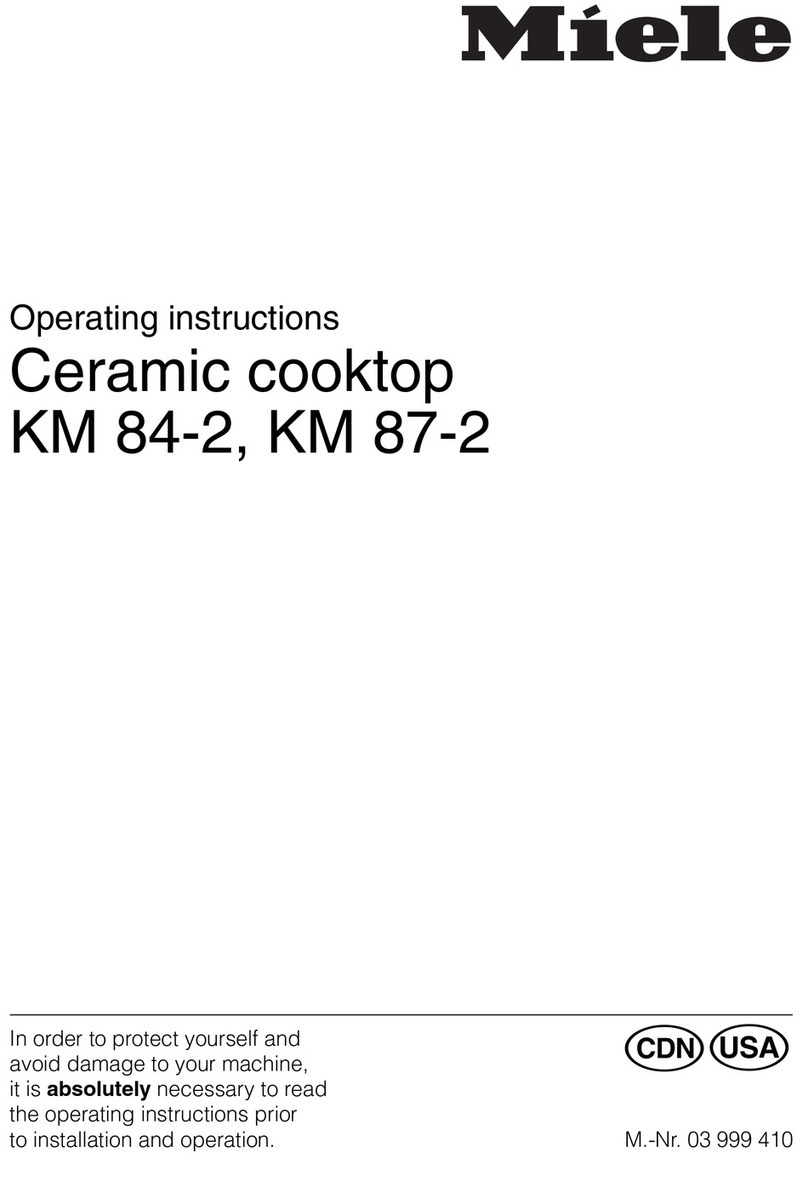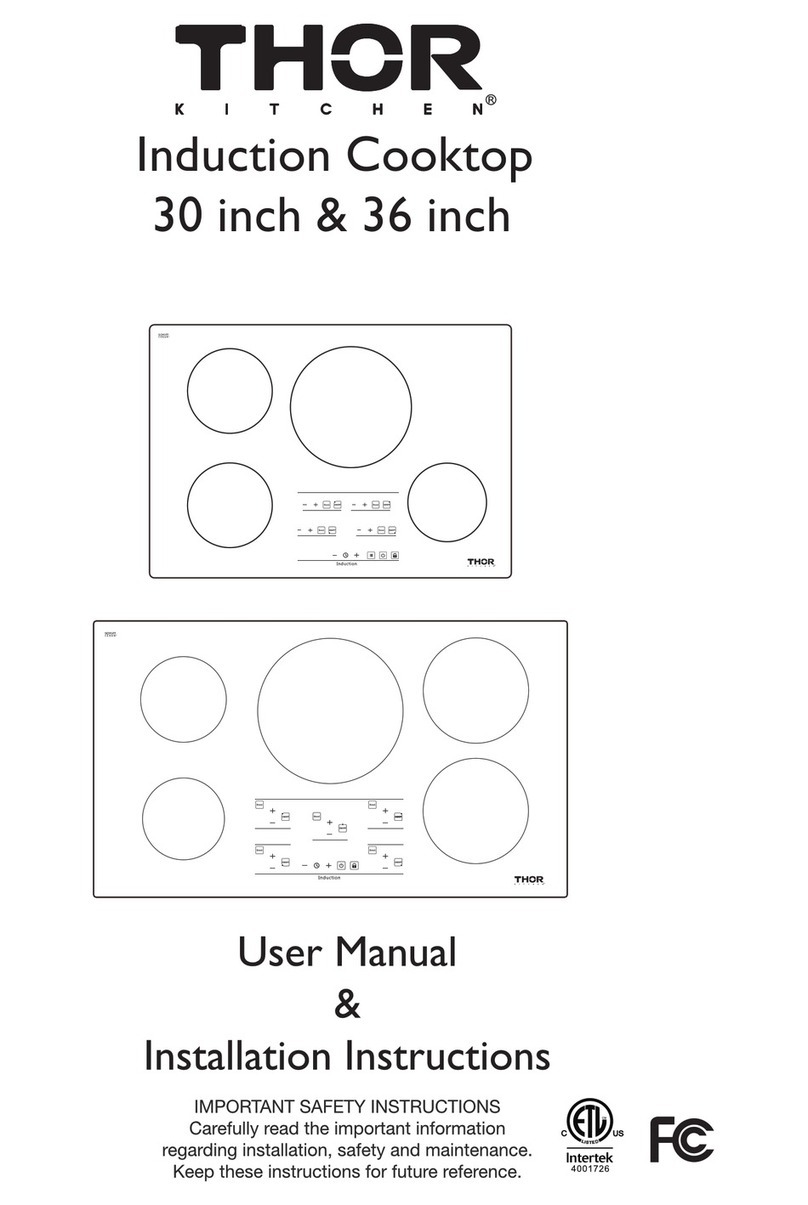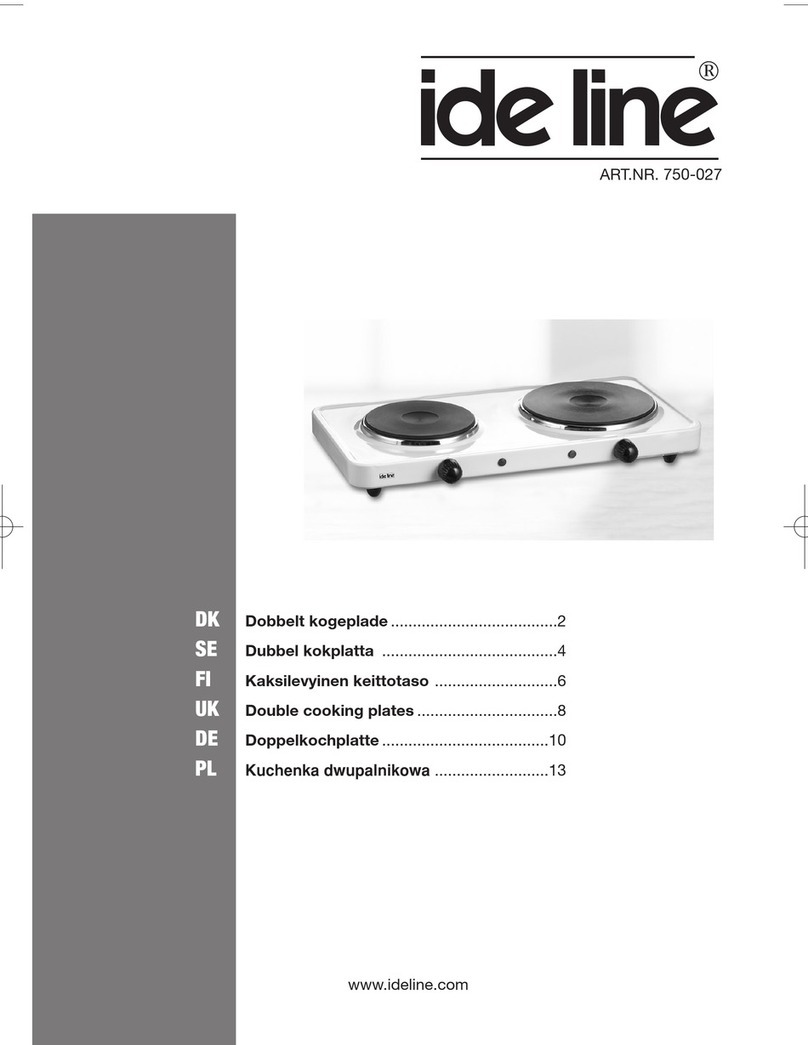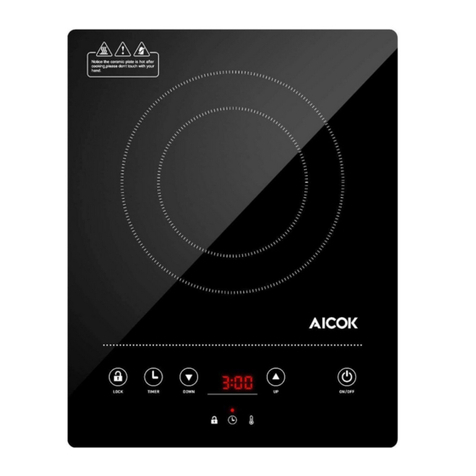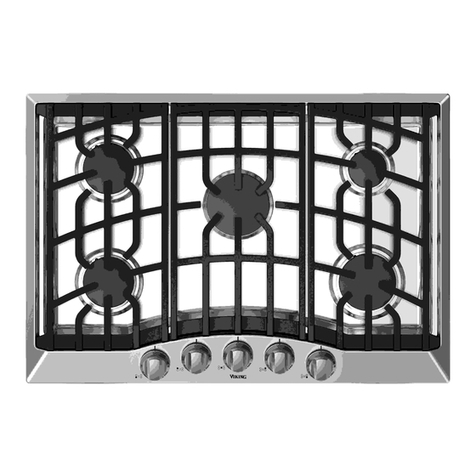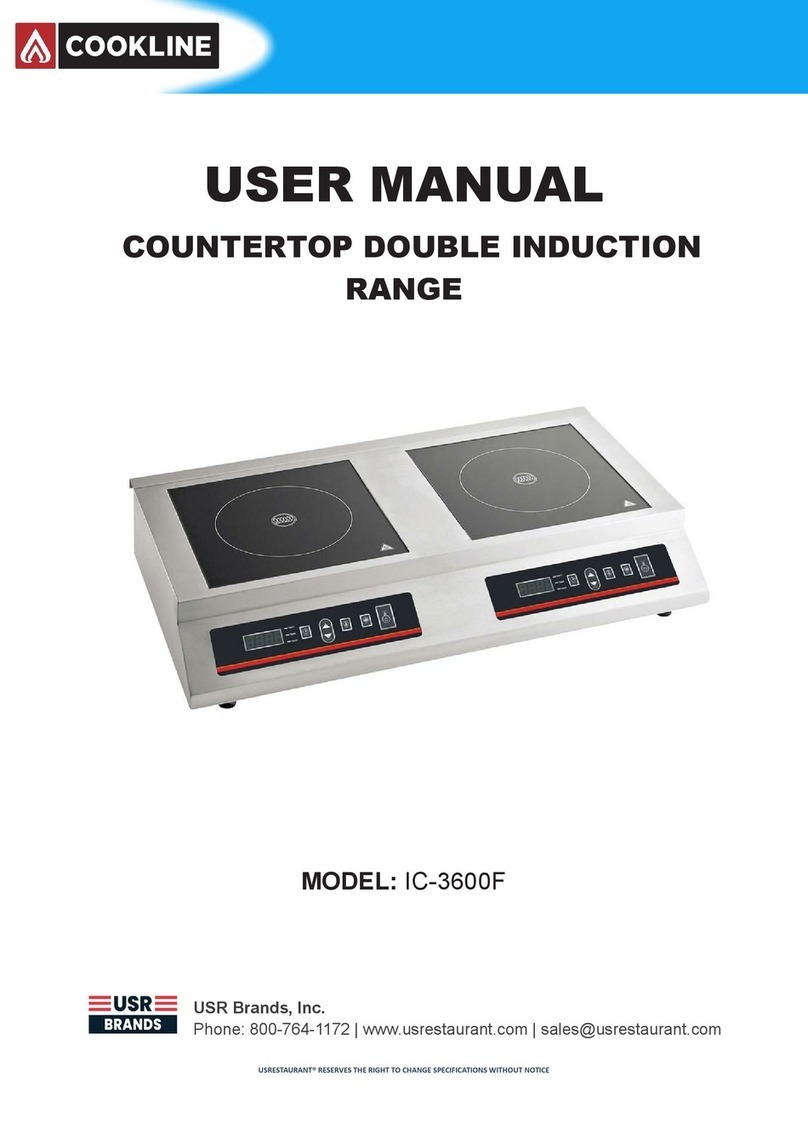GIGA SKT1G Parts list manual

009_03
Instructions for installation,
use and maintenance
09/2015
© COPYRIGHT 2004 GIGA GRANDI CUCINE SRL
GAS FRYTOP
SKT1G/GC/GR · SKT2G/GC/GR · SKT2G2/GC2/GR2/GLR
SKT3G/GC/GLR · SKT40G/GC/GR · SKT60G/GC/GR
SKT60G2/GC2/GR2/GLR · SKT80G/GC/GLR
CFTG1/1C/1R · CFTG2/2C/2R/2LR · CFTG22/2C2/2R2/2LR
CFTG3/3C/3R/3LR · CFTG4/4C/4R · CFTG6/6C/6R
CFTG62/6C2/6R2/6LR · CFTG8/8C/8R/8LR
TT1G/GC/GR · TT2G/GC/GR · TT2G2/GC2/GR2/GLR
TT3G/GC/GLR · TT40G/GC/GR · TT60G/GC/GR
TT60G2/GC2/GR2/GLR · TT80G/GC/GLR

CHARACTERISTICS
009_03 - GAS FRY TOP
2· 20
Supplied by:
Date:
Customer Service:
FAX
e-mail

INDEX
009_03 - GAS FRY TOP
3· 20
1 Diagram 4
2 Characteristics of the appliances 9
3 Technical data 9
4 Installation instructions 11
4.1 Safety rules 11
4.2 Structure, framework and safety devices of the appliances 11
4.3 Assembly 11
4.3.1 Installation premises 11
4.3.2 Statutory regulations and technical requirements 11
4.3.3 Installation 11
4.3.4 Gas connection 11
4.3.5 Smoke extraction 11
5 Operation preparation 12
5.1 Preparation and Start-up 12
5.1.1 Start-up 12
5.1.2 Check of power 12
5.1.3 Checking the input pressure 12
5.1.4 Power check with volumetric method 12
5.1.5 Power check for operation with liquid gas 12
5.1.6 Operation control 12
5.1.7 Check of pilot flame 12
5.1.8 Checking the primary air 12
5.1.9 Operator training 13
5.1.10 Conversion and adjustment 13
5.1.11 Replacement of burner injector 13
5.1.12 Replacement of burner injector fry top 2 controls 600 13
5.1.13 Replacement of burner pilot injector 13
5.1.14 Adjusting the pilot burner fry top 2 controls 600 13
5.1.15 Setting reduced capacity power 14
5.2 Maintenance 14
5.3 Replacing parts 14
5.3.1 Gas cock 14
5.3.2 Gas valve 14
5.3.3 Thermocouple 14
5.3.4 Plug 14
5.3.5 Plug fry top 2 controls 600 14
6 Instructions for use 15
6.1 Safety, cleaning and repair rules 15
6.2 Start-up smooth and grooved plate 15
6.2.1 Lighting pilot burner 15
6.2.2 Lighting the main burner and temperature adjustment 15
6.3 Start-up chrome plate 15
6.3.1 Lighting pilot burner 15
6.3.2 Lighting the main burner and temperature adjustment 15
6.4 Cleaning and taking care of the machine 16
6.5 Turning the appliance off in case of breakdown 16
6.5.1 What to do in case of failure 16
6.5.2 What to do in case of prolonged period of disuse 16
6.6 Appliance care and frequency of maintenance 16
6.7 Recommendations for handling “stainless steel” industrial
kitchens 16
6.7.1 Useful information on “stainless steel” 16
6.7.2 Warnings and advice for maintenance of “stainless steel”
appliances 16
6.7.3 WEEE Directive 17

1 - DIAGRAM
009_03 - GAS FRY TOP
4· 20
SKT1G - SKT1GC
SKT40G - SKT40GC
SKT1GR
SKT40GR
30
40 40
30 270
300
G
T
80 ±1
35 ±2
13.5 ±1
131
320
205.5
400
52
510
93
104
G
35 ±2
13.5 ±1
655
TT1G - TT1GC
TT40G - TT40GC
TT1GR
TT40GR
30
40 40
30 270
300
G
T
80 ±1
80 ±2
13.5 ±1
210
320
205.5
400
97
510
93
104
G
80 ±2
13.5 ±1
700
G
T
Gas connection (1/2")
Data plate

1 - DIAGRAM
009_03 - GAS FRY TOP
5· 20
300 300
40 40
30 270
300
G
T
80 ±1
80 ±2
13.5 ±1
210
520
205.5
600
97
510
93
104
G
80 ±2
13.5 ±1
700
SKT2G - SKT2G2 - SKT2GC - SKT2GC2
SKT60G - SKT60G2 - SKT60GC - SKT60GC2
300 300
40 40
30 270
300
G
T
80 ±1
35 ±2
13.5 ±1
130
520
205.5
600
52
510
93
104
G
35 ±2
13.5 ±1
655
104
G
35 ±2
13.5 ±1
655
SKT2GLR
SKT60GLR
TT2G - TT2G2 - TT2GC - TT2GC2
TT60G - TT60G2 - TT60GC - TT60GC2
SKT2GR - SKT2GR2
SKT60GR - SKT60GR2
TT2GR - TT2GR2
TT60GR - TT60GR2
104
G
80 ±2
13.5 ±1
700
TT2GLR
TT60GLR
G
T
Gas connection (1/2")
Data plate

1 - DIAGRAM
009_03 - GAS FRY TOP
6· 20
300 200 300
40 40
30 270
300
G
T
80 ±1
35 ±2
13.5 ±1
130
720
205.5
800
52
510
93
""
G
35 ±2
13.5 ±1
655
TT3G - TT3GC
TT80G - TT80GC
TT3GLR
TT80GLR
300 200 300
40 40
30 270
300
G
T
80 ±1
80 ±2
13.5 ±1
210
720
205.5
800
97
510
93
""
G
80 ±2
13.5 ±1
700
SKT3G - SKT3GC
SKT80G - SKT80GC
SKT3GLR
SKT80GLR
G
T
Gas connection (1/2")
Data plate

1 - DIAGRAM
009_03 - GAS FRY TOP
7· 20
30
875
52.5 52.5
13.5 1
98 2
140 465 270 210
295
205.5
T
G
280 2
700
G
400
280 1
97
510
93
G
300 300
875
52.5 52.5
13.5 1
98 2
140 465 220
50
210
495
205.5
G
104
600
280 2
97
510
93
G
280 2
700
G
104
T
CFTG1 - CFTG1C
CFTG4 - CFTG4C
CFTG1R
CFTG4R
CFTG2 - CFTG22 - CFTG2C - CFTG2C2
CFTG6 - CFTG62 - CFTG6C - CFTG6C2
280 2
700
G
104
CFTG2LR
CFTG6LR
CFTG2R - CFTG2R2
CFTG6R - CFTG6R2
G
T
Gas connection (1/2")
Data plate

1 - DIAGRAM
009_03 - GAS FRY TOP
8· 20
300 300200
875
52.5 52.5
13.5 1
98 2
140 465 220 270
695
205.5
G
800
"" ""
280 1
97
510
93
G
280 2
700
G
T
CFTG3 - CFTG3C
CFTG8 - CFTG8C
CFTG3LR
CFTG8LR
"" ""
280 2
700
G
CFTG3R
CFTG8R
G
T
Gas connection (1/2")
Data plate

2 - CHARACTERISTICS OF THE APPLIANCES
009_03 - GAS FRY TOP
9· 20
3 - TECHNICAL DATA
0051
TIPO/TYPE
CAT/KAT GAS/GAZ G30 G31 G20 G25
II2H3B/P P mbar 30 30 20 -
II2H3+ P mbar 30 37 20
-
-
II2H3+ P mbar 28 37 20 -
25II2L3B/P P mbar 30 30
II2ELL3B/P P mbar 50 50 20 20
II2E+3+ P mbar 28 37 20 25
II2H3B/P P mbar 50 50 20 -
I2E P mbar - - 20 -
--II2H3B/P P mbar 30 30
II2H3+ P mbar 28 37 20 -
--
--
I3B/P P mbar 30 30
I3+ P mbar 28 37
SE FI DK CZ SK SI
IT CH PT
ES IE GB GR
NL
DE
FR BE
AT CH
LU
EE LV LT
EE LV LT
NO MT CY IS HU
CY
MOD.
MOD.
ART.
N.
N.
Qn kW
m3/h
MADE IN ITALY
Predisposto a gas: - Gas preset: - Prevu pour gaz:
Eingestelt für Gas: - Preparado para gas: -
Geschuckt voor:
V AC kW Hz
THE APPLIANCE MUST BE CONNECTED IN COMPLIANCE WITH THE LAWS IN FORCE
AND INSTALLED IN A WELL-VENTILATED ROOM. READ THE INSTRUCTION MANUALS
BEFORE INSTALLING AND USING THE APPLIANCE.
THE APPLIANCE MUST BE INSTALLED BY QUALIFIED PERSONNEL.
G30/G31 28/37 mbar
G20 20 mbar
These appliances are used for professional purposes. Installation,
repair and use must be carried out by expert personnel.
These instructions for installation are for our gas fry top set up for
the category in the table 1 on pag. 10. The data plate is located on
the appliance, see diagram. Beware of inexpert handling.
Model
SKT1G/GC/GR
TT1G/GC/GR
CFTG1/G1C/G1R
SKT40G/GC/GR
TT40G/GC/GR
CFTG4/G4C/G4R
SKT2G/GC/GR
TT2G/GC/GR
CFTG2/G2C/G2R
SKT60G/GC/GR
TT60G/GC/GR
CFTG6/G6C/G6R
SKT2G2/GC2/GR2/GLR
TT2G2/GC2/GR2/GLR
CFTG22/G2C2/G2R2/G2LR
SKT60G2/GC2/GR2/GLR
TT60G2/GC2/GR2/GLR
CFTG62/G6C2/G6R2/G6LR
SKT3G/GC/GLR
TT3G/GC/GLR
CFTG3/G3C/G3R/G3LR
SKT80G/GC/GLR
TT80G/GC/GLR
CFTG8/G8C/G8R/G8LR
Version
Gas Fry Top Varipan
Gas Fry Top Varipan
Gas Fry Top Varipan
Gas Fry Top Varipan
Gas Fry Top Varipan
Gas Fry Top Varipan
Gas Fry Top Varipan
Gas Fry Top Varipan
Gas Fry Top Varipan
Gas Fry Top Varipan
Gas Fry Top Varipan
Gas Fry Top Varipan
Gas Fry Top Varipan - 2 separate cooking areas
Gas Fry Top Varipan - 2 separate cooking areas
Gas Fry Top Varipan - 2 separate cooking areas
Gas Fry Top Varipan - 2 separate cooking areas
Gas Fry Top Varipan - 2 separate cooking areas
Gas Fry Top Varipan - 2 separate cooking areas
Gas Fry Top Varipan - 2 separate cooking areas
Gas Fry Top Varipan - 2 separate cooking areas
Gas Fry Top Varipan - 2 separate cooking areas
Gas Fry Top Varipan - 2 separate cooking areas
Gas Fry Top Varipan - 2 separate cooking areas
Gas Fry Top Varipan - 2 separate cooking areas
Dim.: LxWxH
400 x 650 x 300 (430)
400 x 700 x 300 (510)
400 x 700 x 875 (1080)
400 x 650 x 300 (430)
400 x 700 x 300 (510)
400 x 700 x 875 (1080)
600 x 650 x 300 (430)
600 x 700 x 300 (510)
600 x 700 x 875 (1080)
600 x 650 x 300 (430)
600 x 700 x 300 (510)
600 x 700 x 875 (1080)
600 x 650 x 300 (430)
600 x 700 x 300 (510)
600 x 700 x 875 (1080)
600 x 650 x 300 (440)
600 x 700 x 300 (510)
600 x 700 x 875 (1080)
800 x 650 x 300 (430)
800 x 700 x 300 (510)
800 x 700 x 875 (1080)
800 x 650 x 300 (430)
800 x 700 x 300 (510)
800 x 700 x 875 (1080)
N.
51BQ2907
51BQ2907
51BQ2907
51BQ2907
51BQ2907
51BQ2907
51BQ2908
51BQ2908
51BQ2908
51BQ2908
51BQ2908
51BQ2908
51BQ2909
51BQ2909
51BQ2909
51BQ2909
51BQ2909
51BQ2909
51BQ2907
51BQ2907
51BQ2907
51BQ2907
51BQ2907
51BQ2907
G = smooth plate
GC = chromium plate
GR = grooved plate
GLR = smooth-grooved plate

3 - TECHNICAL DATA
009_03 - GAS FRY TOP
10 · 20
Primary air distance “A”
Methane gas G20
Liquid gas G30/G31
Model
Category
Construction type
Air necessary for combustion
Nominal thermal power
Minimum thermal power
Connection pressure
Methane gas 2H
Liquid gas 3+
Gas connection values
Methane gas 2H
Liquid gas 3+
Nozzles Ø 1/100 mm
Main burner
G20
G30/G31
(HuB = 9.45 kWh/m3) m3/h
(HuB = 12.87 kWh/kg) kg/h
Nominal capacity
Low flame
Nominal capacity
Low flame
G20
G30/31
20 mbar
28/37 mbar
II2H3+
A
m3/h
kW
kW
No. of nozzles, pilot burner
G20
G30/G31
15
15
36
19
11
5.3
2.4
15
15
225
adjustable
150
90
36
19
17
8.5
3.7
15
15
2 x 36
2 x 19
22
5.3+5.3=10.6
2.4+2.4=4.8
SKT1G/GC/GR
SKT40G/GC/GR
TT1G/GC/GR
TT40G/GC/GR
CFTG1/G1C/G1R
CFTG4/G4C/G4R
175
adjustable
115
70
SKT2G/GC/GR
SKT60G/GC/GR
TT2G/GC/GR
TT60G/GC/GR
CFTG2/G2C/G2R
CFTG6/G6C/G6R
-
-
SKT2G2/GC2/GR2/GLR
SKT60G2/GC2/GR2/GLR
TT2G2/GC2/GR2/GLR
TT60G2/GC2/GR2/GLR
CFTG22/G2C2/G2R2/G2LR
CFTG62/G6C2/G6R2/G6LR
155
adjustable
105
2 x 70
35
20
19
4.5+4.5=9.0
2.3+2.3=4.6
2 x 175
adjustable
2 x 115
2 x 70
SKT3G/GC/GLR
SKT80G/GC/GLR
TT3G/GC/GLR
TT80G/GC/GLR
CFTG3/G3C/G3LR
CFTG8/G8C/G8R/G8LR
0.561
0.415
0.899
0.665
0.952
0.704
1.122
0.833
TABLE 1

4 - INSTALLATION INSTRUCTIONS
009_03 - GAS FRY TOP
11 · 20
4.1 Safety ules
• Installation, modifications and maintenance of the appliance
must be carried out by authorised personnel in compliance with
current safety standards. The manufacturer declines all responsi-
bility for failure to comply with these obligations.
• In compliance with international regulations, when connecting
the appliance to the mains power supply, a device with a mini-
mum aperture of 3 mm between contacts must be fitted
upstream of the appliance, allowing omnipolar disconnection of
the appliance from the mains. Also, a high-sensitivity automatic
differential switch must be installed which protects against direct
or indirect contact with live electrical parts and against current
leakage (maximum current leakage permissible by regulations is
1 mA/kW).
• The appliance must be hooked up to a unipotential system.
• Compare technical datas on grey stickers to those written on this
manual and present power supply.
• Do not bend, crush or damage the cables against sharp corners.
• Lay the cables so as to avoid contact with extremely hot surfaces.
• Connection to the grid must be carried out with at least a cable
type YM or H07R -F.
• The cable - which is totally sheathed – must be led inside the
appliance through the cable clamp and cable raceway installed
on the appliance.
• Ventilation system installation can be carried out only by expert
personnel.
• If the appliance is to be installed near walls, dividing walls, kit-
chen equipment or decorative panelling, these should be in non-
inflammable material. If not, all appliances must be coated with
thermal-insulation fireproof material. Make sure that all fire pre-
vention standards and safety precautions are strictly adhered to.
4.2 St uctu e, equipment and safety devices
of the unit
Robust steel frame, with 4 height adjustable feet.
Steel outer panelling.
The plate is heated by tubular chromium-plated steel burners, built
to withtand thermomechanical stress.
The combustion chamber and flues are made of electrogalvanised
steel sheeting.
Models SKT2G2/GC2/GR2/GLR - TT2G2/GC2/GR2/GLR -
CFTG22/G2C2/G2R2/G2LR - SKT60G2/GC2/GR2/GLR -
TT60G2/GC2/GR2/GLR - CFTG62/G6C2/G6R2/G6LR - SKT3G/GC/GLR -
TT3G/GC/GLR - CFTG3/G3C/G3R/G3LR - SKT80G/GC/GLR -
TT80G/GC/GLR - CFTG8/G8C/G8R/G8LR have two separate grilling
areas on the plate. Each area has itsown temperature controls.
Warning! For model CFTG4/4C/4R and CFTG1/1C/1R if this model is
going to be mounted on its own, it must be fixed to the floor. Fixing
accessories are included. The appliance should be fitted following
the indications given in the drawing below (fig. 1).
4.3 Assembly
4.3.1 Installation premises
The appliance must be installed in a well-ventilated room, and if
possible under a range hood (check current regulations).
The appliance can be installed on its own or with other similar
equipment.
If the appliance is to be installed near inflammable walls, a minimum
distance of 150 mm around the sides and back should be allowed.
If this distance cannot be obtained, take proper heat-protection
action such as fitting tiles or thermal radiation protection material
to the walls.
Before connecting the appliance to the gas supply, check on the
data plate that the appliance is suitable and type-tested for the
type of gas available.
If the type of gas indicated on the data plate of the appliance does
not correspond to the gas which is present, refer to the paragraph
5.1.10 “Conversion and adaptation”.
4.3.2 Statutory regulations and technical requirements
During installation of the appliance, the following regulations must
be adhered to:
• Relevant legal directives;
• Local building and combustion regulations;
• "Technical rules for gas systems" worksheet;
• "Technical rules for liquid gas" worksheet;
• “Gas installations in industrial kitchens” worksheet;
• Relative accident prevention standards;
• Local gas utility regulations;
• Local building and fire codes.
4.3.3 Installation
Before installation, gas connection, power check, conversion or
adjustment and start up ask for gas supply company advice.
4.3.4 Gas connection
The R 1/2” gas connection of the appliance to the gas pipeline can
either be permanently fixed to the mains or made detachable using
an approved cock.
After completing gas connection, check for leaks using a special
leak-detector spray.
4.3.5 Smoke e traction
These fry top are type A appliances, thus no smoke extraction sys-
tem is required.
For the ventilation of the room where the appliance is installed,
refer to related legislation.
RETRO
ARRIERE
BACK
ATRÁS
RÜCKSEITE
ACHTERAAN
Fig. 1

5 - SET-UP FOR OPERATION
009_03 - GAS FRY TOP
12 · 20
5.1 Preparation and Start-up
Before starting up the appliance, remove the protective wrapping.
Then carefully clean the working surface and the external parts with
lukewarm water and detergent, using a damp rag to remove all traces
of anti-rust material applied in the factory, then dry with a clean cloth.
Protect cooking plate with oil or grease.
5.1.1 Start-up
Before using the appliance for the first time, thoroughly clean out
the griddle (see the chapter 6.4 “Cleaning and taking care of the
machine”).
Before starting up the appliance, check that its specifications (cate-
gory and type of gas used) match those of the family and group of
the gas available locally.
If not, it is necessary to adapt the appliance to the gas family or
group required (see paragraph 5.1.10 “Conversion and adaptation”).
To start up the appliance, see the instructions for regular use.
5.1.2 Check of power
The appliances must be used with the specific injectors for the nomi-
nal power.
The power may be:
• the nominal power indicated on the data plate of the appliance;
• the reduced capacity power.
These injectors are shown in table 1.
Nominal power is also obtained in respect of the supply pressure:
• from 15 to 22.5 mbar for gases of the second family (G20/methane)
• from 25 to 45 mbar for gases of the 3rd family
(G30/butane, G31/propane)
The appliance shall not be operated outside the above-mentioned
pressure ranges.
To adjust power with reduced capacity, use the data in table 1.
If you wish to further check the nominal power, you may do so by
using a gas meter according to the so-called "volumetric method".
A simple inspection is usually enough to check if injectors are func-
tioning correctly.
5.1.3 Checking the input pressure
Input pressure should be measured using a fluid measuring gauge
(e.g. a gooseneck pipe, min. resolution 0.1 mbar).
Remove lock screw (pos. 22 fig. 2 and 3) from the pressure intake tube
and connect the gauge hose: once measurement is complete, replace
the screw and do a seal check using a leak detector spray.
5.1.4 Power check with volumetric method
Using a gas meter and a stopwatch, you can read the volume of gas
output per time unit. The correct volume corresponds to the value
"E" expressed in litres/hour (l/h) or litre/minute (l/min).
The following formula is used to calculate the value of “E”:
It is important measure the power when the appliance is in standby
status.
The calorific power value can be requested from the local gas company.
The nominal power and the minimum power with respect to the
nominal pressure are obtained by consulting the table for the
adjustment of the gas passage (table 1).
WARNING
There is no pre-adjustment device for the nominal
power.
5.1.5 Power check for operation with liquid gas
Check if the type of injectors used meet the data of the table 1.
Check that the pressure reducer installed in the system has an outlet
pressure which is compliant with paragraph 5.1.2 "Check of power"
(can be checked on the data plate of the appliance or on the table
1).
5.1.6 Operation control
• Start the appliance in accordance with the instructions.
• Check that the appliance does not have any leaks by using a
leak-detecting spray.
• Check ignition and that flame on the main burner lights pro-
perly and is correctly formed, even on low.
• A servicing and maintenance contract is recommended.
5.1.7 Check of pilot flame
For proper regulation, the pilot flame must surround the thermo-
couple and it must have a perfect appearance; otherwise, check gas
pressure, make sure the injector is clean and has the right diameter
for the gas, see table 1.
5.1.8 Checking the primary air
The burner is equipped with primary air adjustment. Distance “A”
(fig. 3) see table 1. Not scripted for SKT2G2/GC2/GR2/GLR -
SKT60G2/GC2/GR2/GLR - TT2G2/GC2/GR2/GLR - TT60G2/GC2/GR2/GLR
- CFTG22/G2C2/G2R2/G2LR - CFTG62/G6C2/G6R2/G6LR.
Air volume flow is correct when there is sufficient protection again-
st the flame rising when the burner is cold or in case of flashback
when the burner is hot.
E =Power
Operating calorific value
1
16
21
22
17
18
Fig. 2
20
21
22
16
18
17
Fig. 3

5 - SET-UP FOR OPERATION
009_03 - GAS FRY TOP
5.1.9 Operator training
• Explain and show the user how the machine works according to
the instructions, and hand him this manual.
• Remind the user that any structural alterations or any building
modification or renovation may affect the combustion air supply,
thus requiring a second operation check.
5.1.10 Conversion and adjustment
To change over form one kind of gas to another, for example from
methane to liquid gas, or to another type of gas, the use of suitable
injectors for the main burner is required, in accordance with the
table 1.
The injectors of the main burners and pilot for different types of
gas, marked with the relative diameter in hundredths of mm, are in
an envelope which is provided with the appliance. If injectors are
not available please contact the factory with model and serial num-
ber written on technical data sticker. After transformation or adap-
tation, carry out operating checks as described in paragraph 5.1.6
“Operation control”.
5.1.11 Replacement of burner injector
To replace the injector (pos. 30 fig. 4), pull out the fat tray and
loosen the fixing screws holding the control panel in place. Remove
the panel. Unscrew the injector from the injector holder with an
adjustable spanner; replace with a new injector (see “TECHNICAL
DATA” table 1). To make changing the injector easier, loosen screw
(pos. 39 fig. 4); to push the air adjustment sleeve back.
After fitting the injector, reset primary air distance “A” (see “TECH-
NICAL DATA” table 1).
After the replacement check the seal using a leack detetctor spray.
5.1.12 Replacement of burner injector fry top 2
controls 600
To change injector (pos. 30 fig. 5), pull out the fat tray and loosen
the fixing screws holding the control panel in place. Remove the
panel. Unscrew the injector from the injector holder with an adju-
stable spanner; replace with a new nozzle (see “TECHNICAL DATA”
table 1).
After the replacement check the seal using a leack detetctor spray.
5.1.13 Replacement of pilot burner injector
To get at the pilot burner, slide out the fat tray and remove the
control panel (as previously described). The pilot burner has a fixed
gas supply. To change to another type of gas, replace the injector
on burner (pos. 36 fig. 6) according to the type of gas used, by loo-
sening hose (pos. 35 fig. 6) (see “TECHNICAL DATA” table 1).
After the replacement check the seal using a leack detetctor spray.
5.1.14 Adjusting the pilot burner fry top 2 controls
600
Remove the control panel after having loosened the fixing screws.
Remove securing screw (pos. 11 fig. 7). Use a screwdriver to set the
adjusting screw (pos. 12 fig. 7) according to the gas used. Replace
securing screw (pos. 11 fig. 7) and relative gasket (pos. 13 fig. 7).
After the replacement check the seal using a leack detetctor spray.
13 · 20
39
31
26
40
2928
30
Fig. 4
40
2928
30
Fig. 5

5 - SET-UP FOR OPERATION
009_03 - GAS FRY TOP
5.1.15 Setting reduced capacity power
The minimum setting screw (pos. 20 fig. 3) should be adjusted as fol-
lows:
• for operation with LPG it should be screwed all the way down;
• for operation with methane, use the gas flow table to check the
value in l/min with respect to the operating alorific value (meas-
urement in accordance with the volumetric method). Start the
appliance in accordance with the instructions. Turn the knob to
the minimum position and use screw (pos. 20 fig. 3) to adjust the
flow (clockwise = flow reduction; conter-clockwise = flow
increase).
Fot the models SKT2G2/GC2/GR2/GLR - TT2G2/GC2/GR2/GLR -
CFTG22/G2C2/G2R2/G2LR - SKT60G2/GC2/GR2/GLR -
TT60G2/GC2/GR2/GLR - CFTG62/G6C2/G6R2/G6LR - SKT3G/GC/GLR -
TT3G/GC/GLR - CFTG3/G3C/G3R/G3LR - SKT80G/GC/GLR -
TT80G/GC/GLR - CFTG8/G8C/G8R/G8LR each burner must be adjusted
separately.
5.2 Maintenance
Attention! Before doing any repair or maintenance
work, unplug the appliance.
The following maintenance program should be carried out at least
once a year by qualified personnel with license:
• Check that all the safety and adjustment devices are working
properly;
• Check that the burners are working properly with regard to:
- ignition
- combustion safety;
Check functioning of the appliance as described in paragraph 5.1.6
“Operation control”.
5.3 Replacing parts
All parts must be replaced by authorized technicians
only!
To replace the following parts first remove all the control knobs and
control panel (after loosening the fixing screws), then extract the
ignition wire.
5.3.1 Gas cock
Loosen the gas piping (pos. 21,16,17,18 fig. 3) and thermocouple
hoses, then loosen the fixing screws and insert a new cock. After the
replacement check the seal using a leack detetctor spray.
5.3.2 Gas valve
Loosen the gas piping (pos. 21,16,17,18 fig. 2) and thermocouple
hoses, then loosen the fixing screws and insert a new valve. After
the replacement check the seal using a leack detetctor spray.
5.3.3 Thermocouple
Loosen the nipples fixing the thermocouple to the gas cock/ gas
valve and to the pilot burner; insert the new part. After replacing
the parts, fit the control panel and its parts back in the right order.
5.3.4 Ignition plug
The ignition plu (pos. 37 fig. 6) must be removed from below.
Disconnect the ignition lead, loosen the lock nut and insert a new
plug.
5.3.5 Ignition plug fry top 2 controls 600
The ignition plu (pos. 37 fig. 7) must be removed from below.
Disconnect the ignition lead, loosen the lock nut (pos. 38 fig. 7) and
insert a new plug.
After any maintenance or repair work, replace the con-
trol panel and the lower panel.
After replacing gas input components, check operation
again and test for leakage.
14 · 20
35
36
34
29
37
Fig. 6
11 13 12
27
38
37
Fig. 7

6 - INSTRUCTIONS FOR USE
009_03 - GAS FRY TOP
15 · 20
6.1 Safety, cleaning and repair rules
• This appliance is used for the preparation of meals at industri-
al level. Usage and cleaning can be carried only by expert per-
sonnel. Maintenance and repair can be carried out only by
skilled technical personnel.
• These indications must be communicated to all those con-
cerned during internal training.
• Attention! This appliance must be constantly watched over
when being used!
• Grease and overheated oil can catch fire. Use this appliance
only under constant control. Never use water to put out
grease or oil!
• Do not leave the burners running.
• Parts of the appliance and attachments exposed to food
must be cleaned with detergents and rinsed thoroughly with
potable water.
• Do not clean the appliance using water jets or steam,
whether direct or pressurized!
• If the room is being cleaned with water/steam jets or high-pres-
sure equipment, it is necessary to switch off the appliance first!
• Before starting to clean the appliance, disconnect from the
mains.
• Do not use inflammable liquid to clean the appliance.
• Repairs may be carried out only by skilled personnel.
• During repairs, the appliance must undergo voltage
omnipolar insulation (local switch, i.e. safety load cut-off
switch).
• Noise emission values of the appliance in operation are below
70dB (A). This value is compulsory according to certain national
safety standards.
WARNING
Attention! The manufacturer declines all responsibility concern-
ing mistakes included in these instructions due to translating or
printing errors: the manufacturer also reserves the right to
change the product as he see fits, though without changing its
essential features. The manufacturer declines all responsibility for
any non-compliance with the provisions contained in this manu-
al.
6.2 Start-up smooth and grooved plate
Before using the appliance for the first time, thorou-
ghly clean the smooth or grooved surface of the plate
with lukewarm water and detergent, using a soft cloth
to eliminate all trace of the rust-proofing applied in the
workshop. Dry with a clean cloth.
6.2.1 Lighting pilot burner
Check that the fat tray is in place.
Press the knob (pos. 4 fig. 8) and turn to the left as far as .
Keep the knob pressed down while repeatedly pressing the piezo
ignition button (pos. 6 fig. 8) until the pilot flame catches, you can
see through aperture (pos. 10 fig. 8) on the control panel. Keep the
knob pressed down for another 15-20 seconds: if the pilot flame
goes out after the knob is released, start again.
6.2.2 Lighting the main burner and temperature adju-
stment
Then place the knob in the maximum or minimum position so that
the main burner ignites. Burner power regulation must be done
between the max ( ) and min. ( ) supply position of easily
selectable intermediate levels.
To shut off the burner, turn the knob to the right to position,
the main burner will go out.
To shut off the pilot light, place the knob in position “0”.
6.3 Start-up chrome plate
Before using the appliance for the first time, thorou-
ghly clean surface of the plate with lukewarm water
and detergent, using a soft cloth to eliminate all trace
of the rust-proofing applied in the workshop. Dry with
a clean cloth.
6.3.1 Lighting pilot burner
Check that the fat tray is in place.
Press the knob (pos. 4 fig. 9) and turn to the left as far as .
Keep the knob pressed down while repeatedly pressing the piezo
ignition button (pos. 6 fig. 9) until the pilot flame catches, you can
see through aperture (pos. 10 fig. 9) on the control panel. Keep the
knob pressed down for another 15-20 seconds: if the pilot flame
goes out after the knob is released, start again.
6.3.2 Lighting the main burner and temperature adju-
stment
To light the main burner, turn the knob further to the left until the
desired temperature. The thermostat is marked in positions from 1
to 7. The approximate values for the temperature for each position
are the following:
Position 1234567
Degrees °C 160 175 195 220 240 265 290
To shut off the main burner, turn the knob to position. Only the
pilot flame will remain lit.
For complete shutdown, turn the knob to position “0”; in this posi-
tion the pilot burner also goes out.
Special precautions
It is recommanded to keep cleaning the plate during use,
using a scraper or a dampf cloth to remove particles of food
which could start smoking and causing unpleasant smells.
10
6
5
4
0
0
Fig. 8

6 - INSTRUCTIONS FOR USE
009_03 - GAS FRY TOP
16 · 20
6.4 Cleaning and taking care of the machine
• Never clean the appliance with jets of water, whether direct or
pressurised!
• Remove, empty and wash the fat tray.
• Never clean the appliance before it has cooled down.
• Rinse the surface with clean water and a soft cloth to get rid of
all traces of detergent.
• When finished using the appliance, it should be cleaned thorou-
ghly every evening.
• Before starting to clean the appliance, disconnect from the
mains. The surfaces and steel parts should be washed in warm
water using a neutral detergent. Avoid using abrasive or corrosi-
ve detergents which could damage the steel.
• Remove any remaining particles of food from the burner surface
by using a scraper or a damp cloth.
• Thoroughly dry the appliance.
• Cleaning the appliance daily guarantees perfect long-term opera-
tion.
6.5 Turning the appliance off in case of
breakdown
6.5.1 What to do in case of failure
In case of breakdown or malfunctioning or failure close the gas cock.
Close the connecting cock of the unit. Call the service centre.
6.5.2 What to do in case of prolonged period of disuse
When the appliance is not to be used for a long time, clean thor-
oughly, cas instructed in the chapter 6.5 “Appliance care and fre-
quency of maintenance”, close the connecting cock of the unit.
6.6 Appliance care and frequency of maintenance
Attention! When cleaning, carefully avoid washing the
appliance with direct water jets or high-pressure
water!
Cleaning must be performed when the appliance is cold.
Thorough daily cleaning of the appliance, after disconnecting it, will
keep it in perfect working order and make it last longer. All steel
parts should be cleaned with water and a detergent, using a damp
cloth; do not use abrasive substances or corroding detergents.
Do not use steel wool, which could cause rust to form.
For the same reason, avoid touching the appliance with anything
made of iron. Do not clean with sandpaper and lubricating gel paper.
If absolutely necessary, you may use pumice powder.
If the appliance is extremely dirty, use a synthetic sponge (i.e.
Scotchbrite sponge).
After cleaning the appliance, rinse with clean water and wipe with a
clean cloth.
All maintenance and repair work must be carried out by authorized
technicians only.
The appliance must be checked at least once a year. For this reason,
a service agreement contract is recommended.
6.7 Recommendations for the treatment of
stainless “steel industrial” kitchens
6.6.1 Useful information on “stainless steel”
Industrial kitchens are generally made of “stainless steel” having
the following material codes:
• 1.4016 or 1.4511 = magnetizable chromed steels
• 1.4301, 1.4401 and 1.4571 = non-magnetizable chromed steels
Chromed steels have favourable thermo-technical characteristics. In
fact, they have less of a tendency to warp due to the effect of heat.
Chrome-nickel steels, instead, have good corrosion resistance features.
“Stainless steel” corrosion resistance is given by an inactive coat
that builds up on the surface by coming into contact with oxygen.
The oxygen in the air is already enough to build up the inactive
coat that allows automatic removal of anomalies and damage due
to mechanical actions. The inactive coat builds up or re-builds up
faster if the steel comes in contact with running water containing
oxygen.
A more powerful effect is given by oxidative acids (nitric acid, oxalic
acid). These acids are used if the steel has undergone strong chemi-
cal stresses, hence generally losing its inactive coat.
The inactive layer can be chemically damaged or jeopardized by
reducing agents (oxygen consumption) if they come in contact with
the steel, concentrated or at high temperatures. These active sub-
stances include for instance:
• saline and sulphurous substances
• chlorides (salts)
• concentrated spices such as mustard, vinegar essences, soup
cubes, kitchen salt solutions, etc.
More damage can be caused by:
• outside rust (i.e. from other components, tools or incipient rust)
• iron particles (i.e. file dust)
• contact with non-ferrous metals (element build up)
• lack of oxygen (i.e. no air inlet, water lacking oxygen).
6.7.2 Warnings and advice for maintenance of “stain-
less steel” appliances
• “Stainless” steel equipment surfaces must be kept clean and in
contact with air at all times. When not running, keep appliance
doors open so as to allow air to run through it.
• Regularly remove calcium , grease, starch, and egg white
deposits where rust may build up if there is lack of air. Do not
use bleaching products or products containing chloride. Follow
all indications given by the company concerning special soaps
and cleaning methods to be used for the appliance. If no specific
cleaning recommendations are available, it is necessary, however,
to use detergents having a low chloride content. After cleaning,
remove all soap residues with plenty of clean water and thor-
10
6
5
4
Fig. 9

6 - INSTRUCTIONS FOR USE
009_03 - GAS FRY TOP
oughly dry the surfaces.
• Minimize contact of “stainless steel” with concentrated acids,
spices, salts, etc. Even acid vapours coming from cleaning the tiles
favour “stainless steel” corrosion.
• Particularly for pots and multiple appliances, it is not recom-
mended to load the cooking chamber only with food having a
high salt content.
It is preferable to cook different food together, i.e. fatty dishes
or vegetables containing acids.
• Avoid damaging the “stainless steel” surface, in particular with
different metals. Residues from other metals help build up the
formation of chemical microelements that may cause rust. At any
rate, it is appropriate to avoid contact between iron and steel
since it produces rust. Any contact between “stainless steel” and
iron (steel wool, pipeline chips, chalybeate waters) can start cor-
rosion phenomena.
• As for mechanical cleaning, it is recommended to use only steel
wool or natural, plastic or steel bristle brushes. Steel wool or
brushes with “stainless steel” can cause rust due to rubbing. Newly
formed rust spots can be removed with slightly abrasive liquid
soaps or fine-grained sand paper. Larger rust spots can be removed
with 2-3% of hot oxalic acid solution. If these cleaning products do
not do the job, a nitric acid (10%) treatment is required.
Attention! These treatments can be carried out only by
expert personnel according to current regulations!
17 · 20
6.7.3 The 2002/96/EC (WEEE) Directive:
information to users
This informational note is meant only for
owners of equipment marked with the
symbol shown in fig. A on the adhesive
label featuring the technical specifica-
tions applied on the actual product (the
label also giving the serial number).
This symbol indicates that the product is classified, according to the
regulations in force, as an item of electrical and electronic equip-
ment and conforms to EU Directive 2002/96/EC (WEEE) meaning that,
at the end of its service life, it must be treated separately from
domestic waste, i.e. it must be handed in free of charge to a separa-
te waste electrical and electronic equipment collection centre or
returned to the reseller when buying a new equivalent item of
equipment.
The user is responsible for delivering the unit at the end of its life to
the appropriate collection facilities. Failure to do so shall result in
the user being subject to the penalties prescribed by the legislation
in force on waste.
Suitable separated collection so that the unit no longer used can be
sent off for environmentally compatible recycling, treatment and
disposal helps avoid possible negative effects on the environment
and on health and facilitates the recycling of the product's compo-
nent materials.
For more detailed information on available collection systems, con-
tact the local waste disposal service or the shop you purchased the
unit from.
Producers and importers fulfil their responsibility for environmental-
ly compatible recycling, treatment and disposal both directly and by
joining a collective scheme.
Fig. A

009_03 - GAS FRY TOP
18 · 20
NOTES

009_03 - GAS FRY TOP
19 · 20
NOTES

GIGA GRANDI CUCINE S.r.l. - Via Pisana, 336 - Loc. Olmo - 50018 SCANDICCI (FI) - ITALY -
Tel. +39 055 722 33 (11 linee r.a.) - Fax +39 055 7310 056 - www.gigagrandicucine.it -
WARNING
THE MANUFACTURER CANNOT BE HELD RESPONSIBLE
FOR ANY INACCURACIES IN THIS BOOKLET DUE
TO COPYING OR PRINTING ERRORS.
DUE TO ITS POLICY OF CONTINUAL PRODUCT IMPROVEMENT,
THE MANUFACTURER RESERVES THE RIGHT
TO MAKE ANY CHANGES DEEMED NECESSARY.
THE MANUFACTURER CANNOT BE HELD RESPONSIBLE
IF THE INSTRUCTIONS CONTAINED IN THIS MANUAL
ARE NOT OBSERVED.
This manual suits for next models
71
Table of contents
Popular Cooktop manuals by other brands

Fagor
Fagor Kore 900 Series Installation, Usage and Maintenance Instructions

Baron
Baron 700 Series INSTRUCTIONS FOR INSTALLATION, ADJUSTMENT, USE AND MAINTENANCE
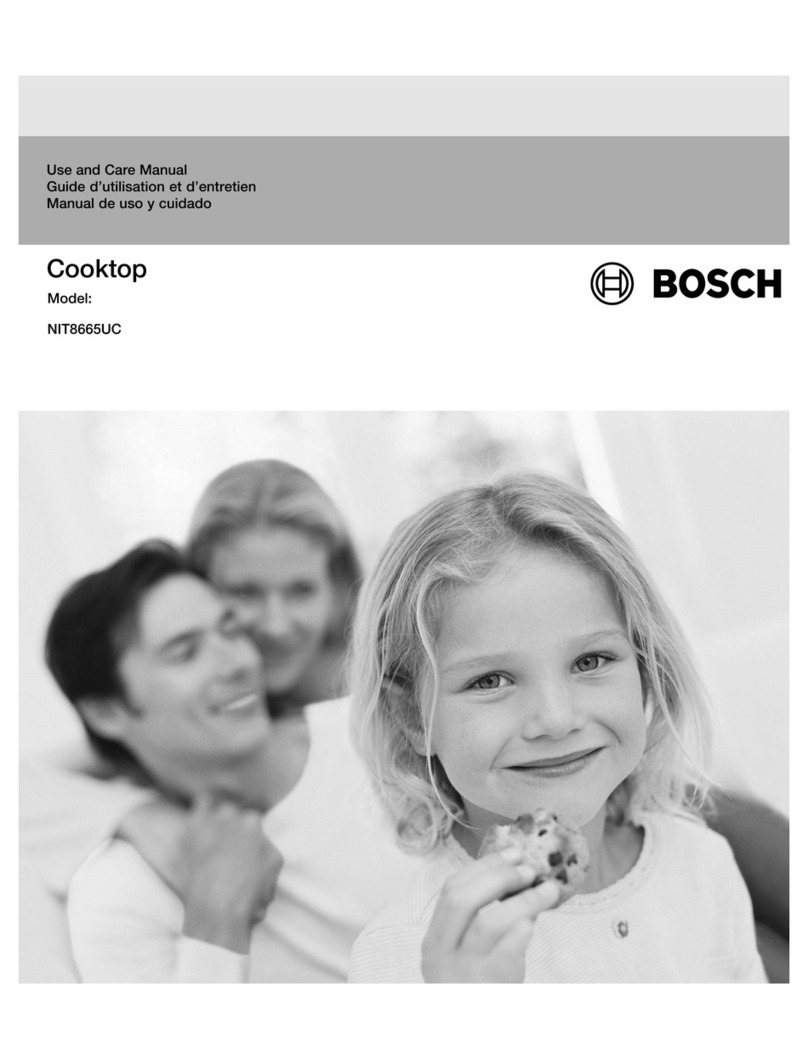
Bosch
Bosch NIT8665UC use and care manual
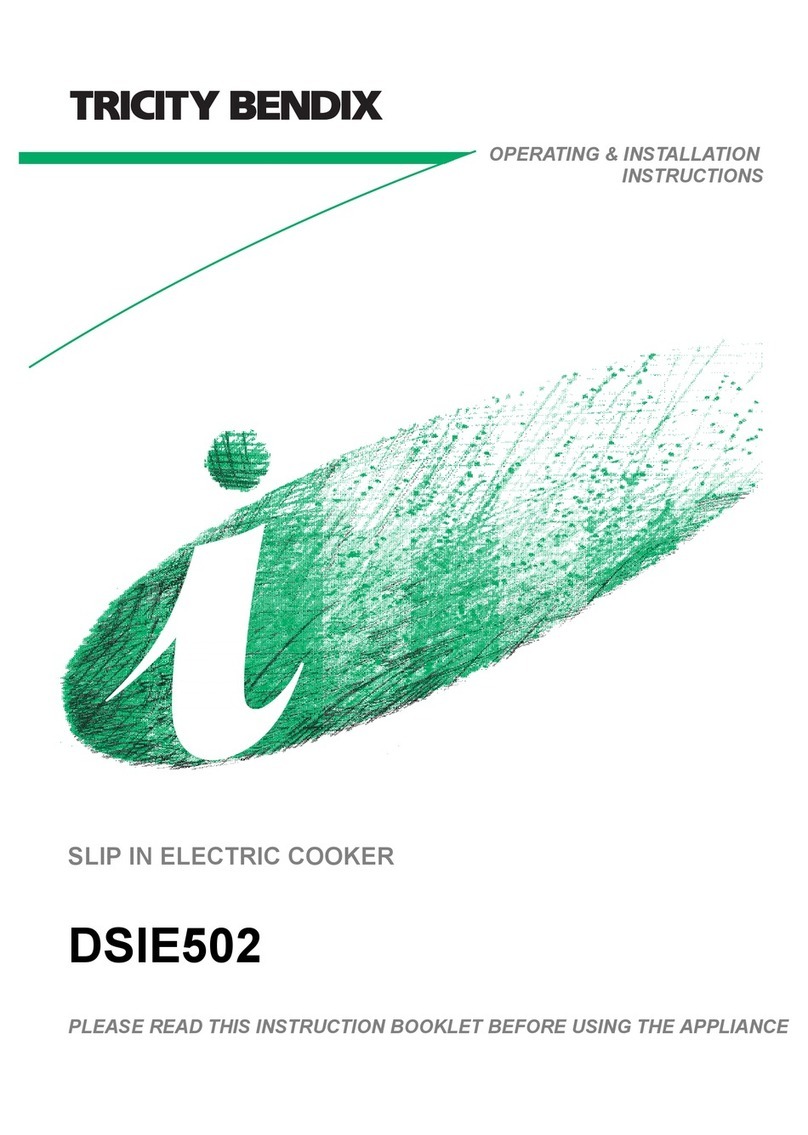
Tricity Bendix
Tricity Bendix DSIE502 Operating and installation instructions

Blanco
Blanco BCCT302 Instructions for the use and care and installation

LG
LG LCG3691ST - 36" Gas Cooktop owner's manual


